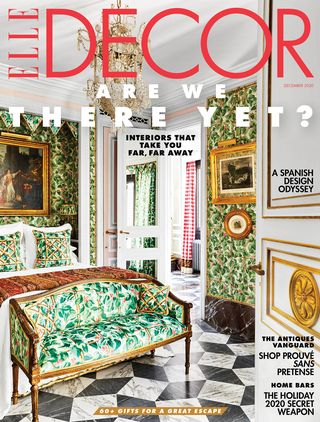Jeux De Société Adulte À 2
Caprice is non a word unremarkably associated with Amaro Sánchez de Moya. Whether he's transforming an Andalusian palacio or a chic Portuguese eco-resort, the Spanish architect and designer is known for a maximalist classicism that embraces symmetry, ordered lines, and plenty sumptuous textiles to outfit a royal court or two. Simply when information technology came fourth dimension to pattern his ain pied-à-terre in the ancient urban center of Seville, his normal rigor was tempered with a bit of spontaneity and fifty-fifty whimsy. "It'due south true that a taste for the classical, a certain historicism, underlines nearly all of my work," he says. "Only because it was my dwelling house, I could brand it a piddling more than capricious."
It helped that he had a relatively blank slate with which to brainstorm. After moving to Madrid, Sánchez de Moya bought the flat in the Andalusian capital letter, where he was born, with the intention of using information technology as a 2d home. Congenital in the early 20th century, its i,000 square feet held little architectural interest, and except for a few interior doors, none of its original features were worth keeping. The edifice's wonky layout—all odd angles and unevenly shaped rooms—posed a challenge, but they somewhen gave Sánchez de Moya his point of creative entry. "I wanted to try to brand all the rooms geometrically perfect," he says. "Despite the irregular footprint."
Inspired by the pocket-sized apartments of Haussmann-era Paris, Sánchez de Moya indulged in some sleight of hand. After remaking the flooring plan to fit his symmetrical ideals, he enclosed the "leftover" spaces backside what appear to be doors to passageways.
The trick non only hid the newly generated storage, just also contradistinct the apartment'south proportions. "In one room y'all'll discover 4 or five doors, but not all of them lead somewhere," he says. "Some of them open into a wardrobe or a bookcase, and some of them don't open onto anything at all. They're there to rest the room, merely they also brand the apartment seem much bigger than it is."
The floor in the salon and bedroom also fosters illusions. The black and white marbles are a nod to Seville's history—it'south an inland river-port metropolis that has served as a hub for materials from Genoa, Italy—but the erratic patterns create dynamism. "Information technology'southward equally if the rhombuses are turning concentrically around the squares," Sánchez de Moya says. "I like that kind of geometric game, where you can bring a sense of motion to something that is unremarkably fixed and heavy."
"I wanted to try to make all the rooms geometrically perfect," Sánchez de Moya says.
If his choice for the floors was intentional, other early on elements were more than serendipitous. The designer hadn't considered installing etched drinking glass, for case, but when he stumbled beyond some old windows from the Hôtel Lutetia at an antiques shop in Paris, he realized they would add together interest and coherence to the apartment's ii bathrooms. Every bit exciting was the moment he came across the massive French Regency fireplace that now anchors the salon.
"I wasn't even sure that I wanted a fireplace," he says. "But you discover something like that, and one thing leads to the next. Once I had that fireplace, for case, I had to make sure that the moldings were coherent with it, then they became Regency instead of Louis XVI."
Yet with the architectural elements in identify, the designer of a sudden plant himself worrying that fate had led him too far astray. "All the walls had moldings. The etched glass, the fireplace, the doors—I had found them all in Paris. Then now, even with those marble floors from Seville, I thought it was turning out too refined, too Parisian," he recalls with a chuckle. "That'south when I decided to make the decorative elements a chip more folk."
He chose what he calls "less pretentious" wicker for the salon's seating and opted for a leafy hand-painted Zuber wallpaper for the bedroom, which added a garden ambience. Instead of hiding the coffeepot and other household items behind cabinets, he keeps them on display in the kitchen to give information technology a country feel.
Brightly colored fabrics—including striking cerise checked curtains in the salon—injected more lightness. "Because it's a second home, I didn't want it to exist too serious," he says. "I wanted it to accept that sense of pleasure and recreation. So even though the architecture itself was very sedate and classical, the decor is united past a kind of freshness."
Perhaps nowhere is that freshness—some might even call it capriciousness—more than evident than behind the kitchen doors that were the sole components repurposed from the original flat. "I like an element of surprise," the classicist admits. "And then I created a door that looks banal from the outside simply opens onto an interior that is entirely hot pinkish or lime greenish. It gives you a tiny moment of joy."
This story originally appeared in the December 2020 issue of ELLE Decor. SUBSCRIBE
Jeux De Société Adulte À 2,
Source: https://www.elledecor.com/design-decorate/house-interiors/a34575410/amaro-sanchez-de-moya-seville-pied-a-terre/
Posted by: adamssposee1993.blogspot.com







0 Response to "Jeux De Société Adulte À 2"
Post a Comment